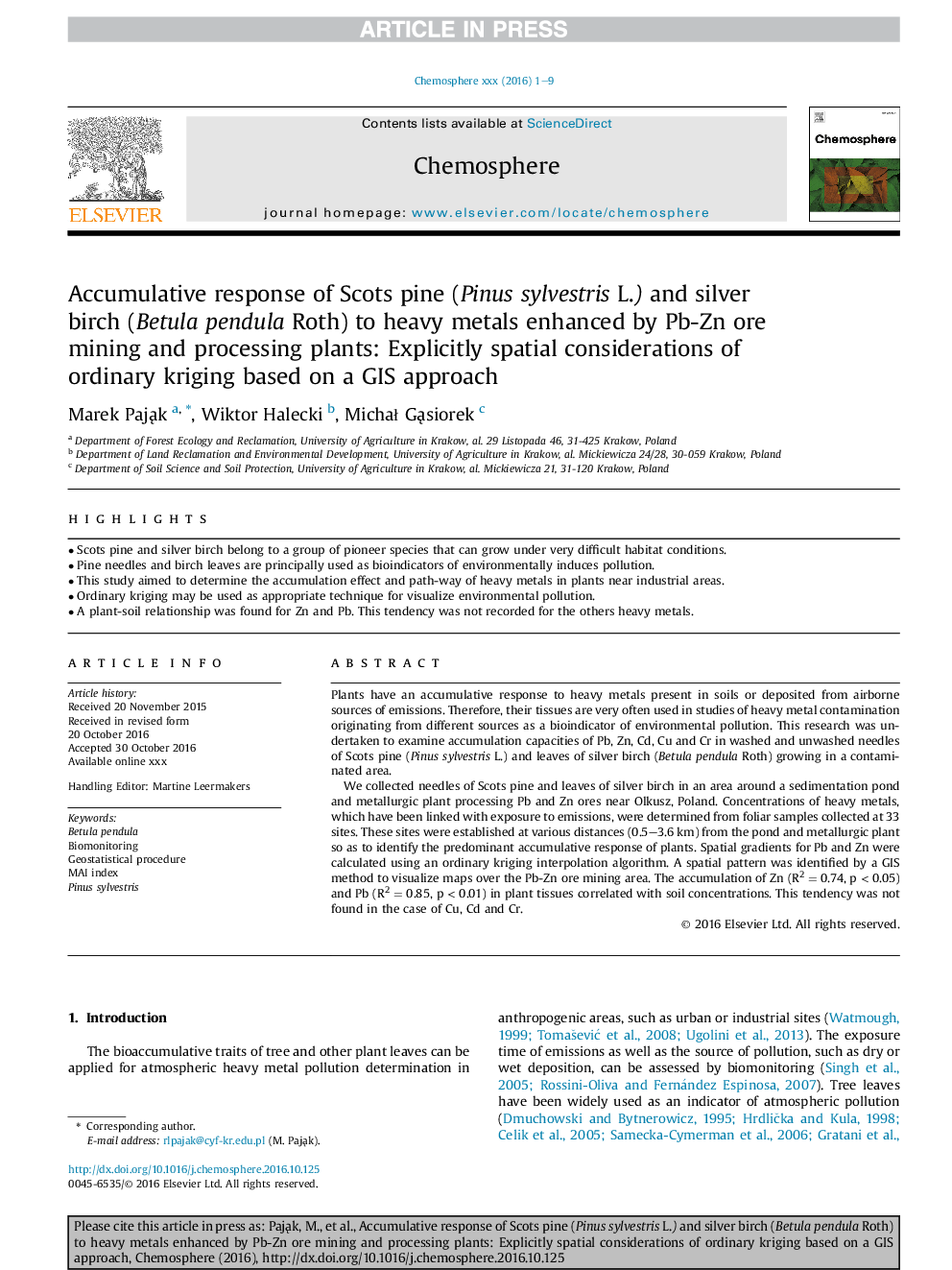| Article ID | Journal | Published Year | Pages | File Type |
|---|---|---|---|---|
| 5746677 | Chemosphere | 2017 | 9 Pages |
Abstract
We collected needles of Scots pine and leaves of silver birch in an area around a sedimentation pond and metallurgic plant processing Pb and Zn ores near Olkusz, Poland. Concentrations of heavy metals, which have been linked with exposure to emissions, were determined from foliar samples collected at 33 sites. These sites were established at various distances (0.5-3.6 km) from the pond and metallurgic plant so as to identify the predominant accumulative response of plants. Spatial gradients for Pb and Zn were calculated using an ordinary kriging interpolation algorithm. A spatial pattern was identified by a GIS method to visualize maps over the Pb-Zn ore mining area. The accumulation of Zn (R2 = 0.74, p < 0.05) and Pb (R2 = 0.85, p < 0.01) in plant tissues correlated with soil concentrations. This tendency was not found in the case of Cu, Cd and Cr.
Related Topics
Life Sciences
Environmental Science
Environmental Chemistry
Authors
Marek PajÄ
k, Wiktor Halecki, MichaÅ GÄ
siorek,
